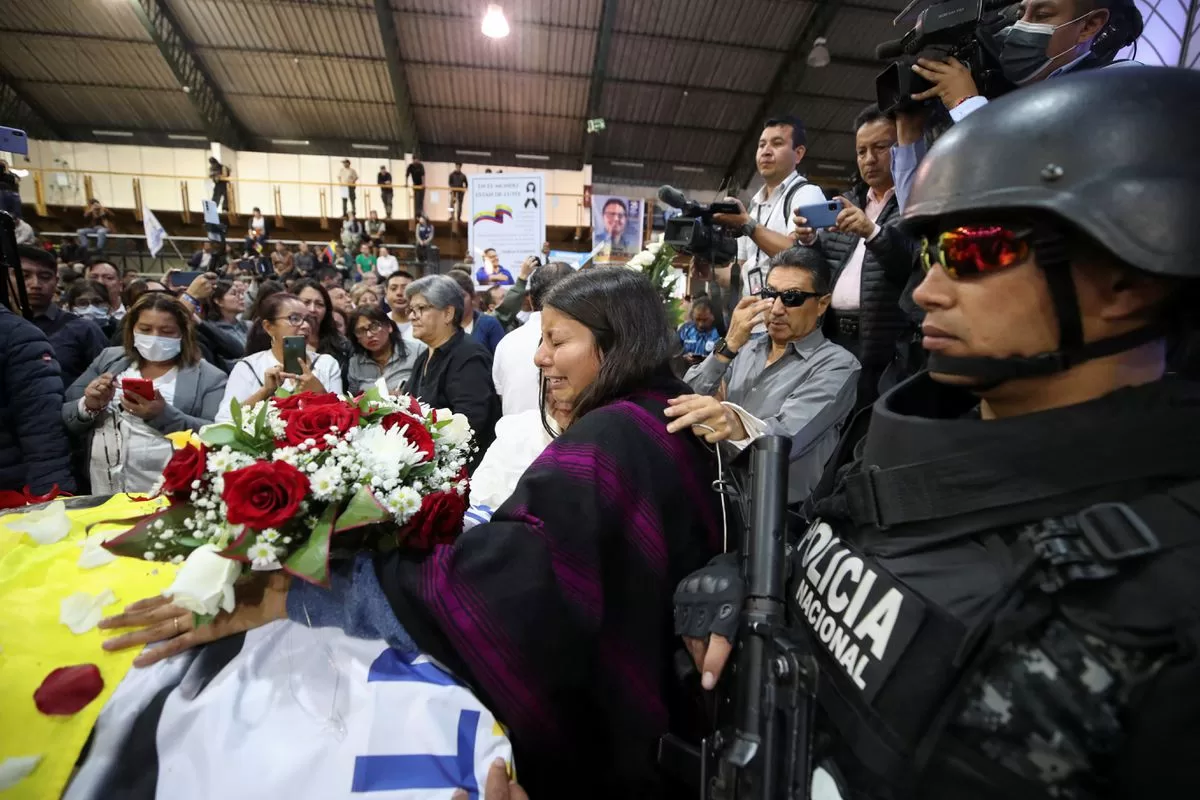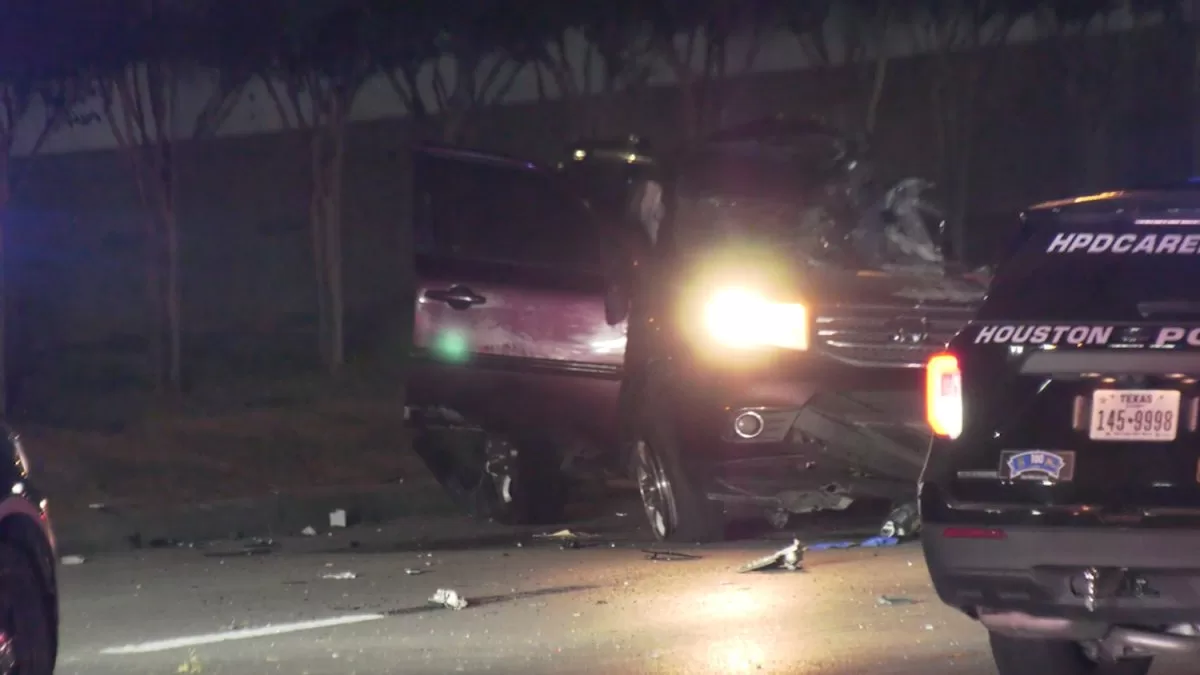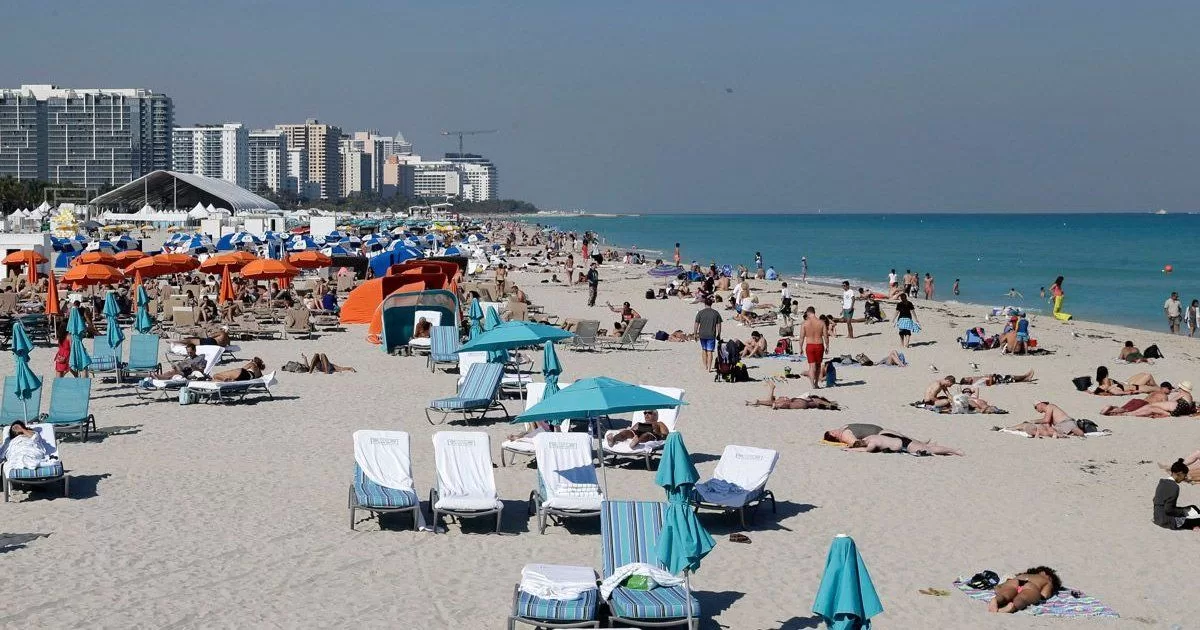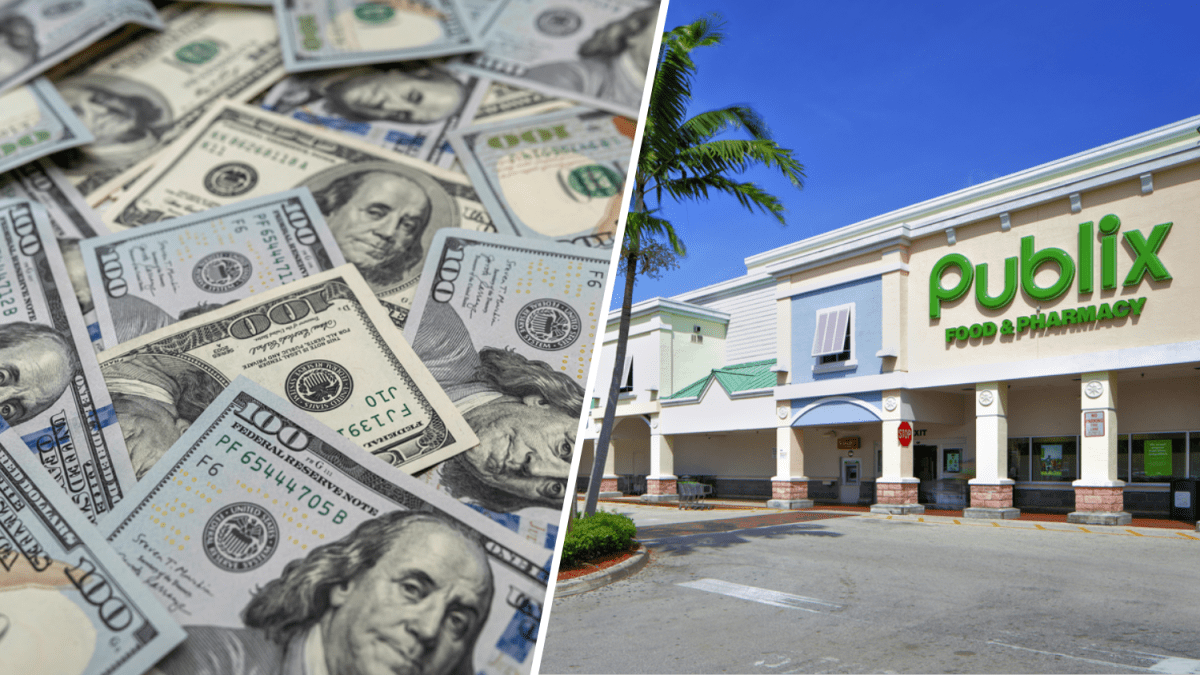The assassination of Ecuadorian presidential candidate Fernando Villavicencio on Wednesday afternoon in Quito demonstrated the scope of the criminal network that suffocated the Andean country and that months ago led to the worst security crisis in its recent history. Behind the attack there is a perfect storm of violence and drug trafficking, to which is added the inability of the authorities to deal with it. Intermingled in this panorama are armed groups from Ecuador, the claws of the Mexican cartels from Sinaloa and Jalisco Nueva Generación and, as happened in the attack on Villavicencio, Colombian hitmen.
The police determined this Friday that four of the six arrested for the murder were at the scene of the crime of Fernando Villavicencio. Another died minutes after the ambush in a confrontation with security forces. At least two of those hitmen were the ones who on Wednesday around 6:15 p.m. (1:15 in mainland Spain) fired six bullets into the glass of the double-cab truck in which the candidate had just gotten in after leaving a rally. The vehicle, ceded by the State, was not armored despite the fact that the same authorities had informed the applicant that he had a 97% probability of suffering an attack. According to the forensic report, Villavicencio died from the impact of a bullet to the head.
After the arrest of the Colombian citizens accused of the attack, sources of the investigation explained to EL PAÍS that two of them had followed Villavicencio that day, who after a public act in Guayaquil traveled to Quito to continue with campaign activities. The suspects were recorded by the security cameras of some commercial premises located near the crime scene, in the financial center of Quito, but they were not detected by the politician’s escorts.
The hitman who died shortly after the attack was hanging around the area, dressed in the shirt of Villavicencio’s political party, Movimiento Construye, and waiting for the candidate to leave the event at Anderson College. The criminals left the place aboard some motorcycles and abandoned them a few blocks away to flee in a vehicle in which two other hit men were waiting for them.
The 59-year-old politician and journalist by profession in the past, had denounced the threats from a criminal known as Fito, leader of the Los Choneros drug gang, especially active on the coast and at the service of the Mexican Sinaloa cartel. Villavicencio’s wake was private. Even close relatives such as his mother and his brothers could not attend, reports Efe. When finished, the coffin was transferred to an auditorium located in the north of Quito, where hundreds of supporters of the candidate had gathered to pay tribute to him. A discreet caravan then went to the Monteolivo cemetery. “My dad put all the corruption of a country on top of him, but I see that he is not alone, that he has many beautiful people here accompanying him,” one of his daughters, Tamia, assured the media at the entrance to the cemetery. Villavicencio.
Join EL PAÍS to follow all the news and read without limits.
subscribe
Another of the clues that the police are following is related to a previous investigation by the anti-narcotics brigade on the main micro-trafficker in Quito. This is Fabricio Colón Pico, who has nearly 30 legal proceedings against him for different crimes related to drug trafficking, robbery, extortion, organized crime and possession of weapons. The narco is still at large.
The criminal, considered one of the most bloodthirsty, is 44 years old and has a criminal career since the 1990s. He manages all the drug trafficking in and around Quito. To do this, he has set up a structure in which he recruits criminals who are dedicated to all kinds of crimes, such as robbery, extortion, small-scale trafficking and hit men.
This criminal also operates as the armed wing of the criminal group Los Lobos, the second largest criminal gang in Ecuador, which according to investigations has ties to the Mexican cartel Jalisco Nueva Generación. His operations center is in the Cotopaxi prison, located an hour from the Ecuadorian capital. Investigations have yet to determine if someone hired Colón Pico to assassinate Fernando Villavicencio. The Prosecutor’s Office, meanwhile, formalized the charges against the six detainees, and the judge confirmed his decision to send them to pretrial detention. “The autopsy protocol indicates that the victim received long-distance shots, while the ballistic report determined that the 2-23 caliber shells match one of the rifles found in the raids (of the suspects’ homes),” said the public ministry.
A hinge territory
The arrest of the Colombian hit men and the presence in Ecuador of Mexican organizations complicate, in any case, the investigation and show the complexity of the criminal network in the region. There is no country in the world that handles such a high proportion of tons of cocaine per inhabitant as Ecuador. The territory, a hinge between the two major coca leaf producers in South America and the world, Colombia and Peru, has become in the last 15 years a logistics platform for large transnational crime organizations. Their presence has made the electoral campaign for the presidential elections on August 20 the most violent in living memory. On Thursday, Assembly candidate Estefany Puente suffered an attack, from which she emerged unharmed, while she was traveling in her vehicle. Days before the attack on Villavicencio, the mayor of the coastal city of Manta and another candidate for Parliament were assassinated.
Faced with this challenge, the Ecuadorian authorities have requested the collaboration of the FBI to advance the investigation into the murder of Villavicencio. As reported by the president, Guillermo Lasso, the country awaits the arrival of a team from the US agency to support the investigations. The US government, however, opted for caution and avoided attributing responsibility for the murder. John Kirby, one of the White House spokesmen, stressed that the investigation is “active” and referred to the official information provided by Quito.
The involvement of Colombian citizens also mobilized the Government of the neighboring country. The Foreign Ministry explained to EL PAÍS that the Colombian consulate in Quito is waiting to receive more information from the defendants. For now, the authorities have determined that they are all men, from different regions of Colombia, and that three of them had a history in the country. Adey Fernando García García, who was born in Timbiquí (Cauca Department) in 1987, appears in at least two criminal proceedings. In 2009, he was sentenced to three years and four months in prison for theft and illegal possession of weapons, and was imprisoned until 2011. Then, in November 2018, another court in Cali sentenced him to 10 years in prison for aggravated homicide and illegal possession. of weapons.
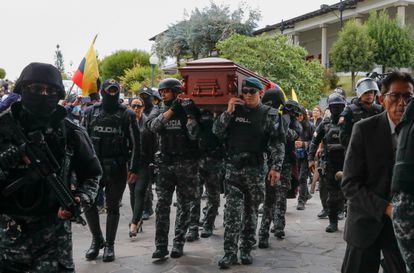
Jules Osmin Castaño Alzate was captured in 2015 in Caquetá for drug trafficking, and ended up sentenced to six years in prison. He was released on parole in August 2017. Andrés Manuel Mosquera Ortiz has criminal proceedings open in a court in Cali. The remaining three were not on the radar of the Colombian judicial authorities. It is known that Jhon Gregore Ramírez is registered to vote at the consulate in Quito, which indicates that he has been living in Ecuador for some time.

